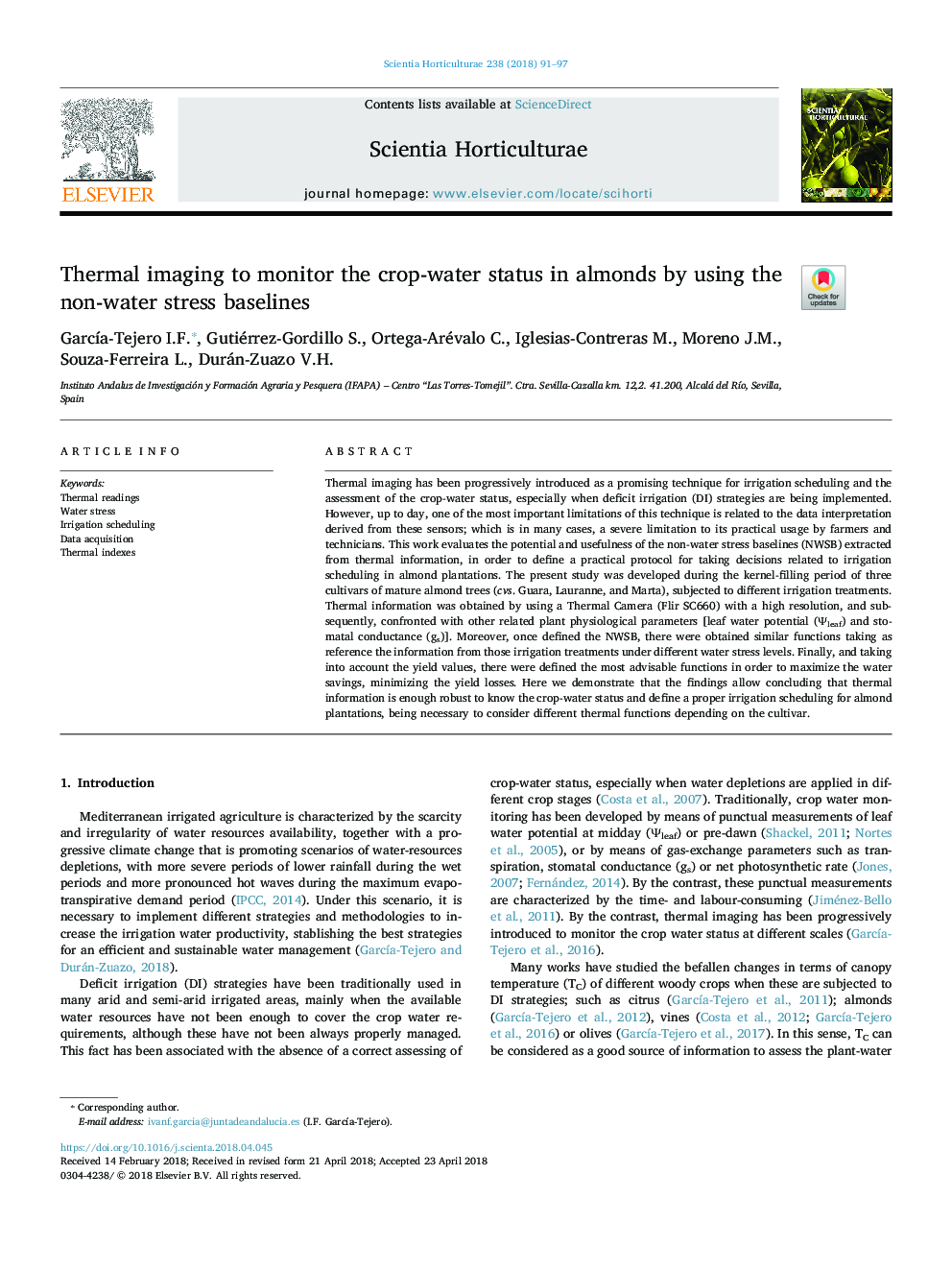| Article ID | Journal | Published Year | Pages | File Type |
|---|---|---|---|---|
| 8892498 | Scientia Horticulturae | 2018 | 7 Pages |
Abstract
Thermal imaging has been progressively introduced as a promising technique for irrigation scheduling and the assessment of the crop-water status, especially when deficit irrigation (DI) strategies are being implemented. However, up to day, one of the most important limitations of this technique is related to the data interpretation derived from these sensors; which is in many cases, a severe limitation to its practical usage by farmers and technicians. This work evaluates the potential and usefulness of the non-water stress baselines (NWSB) extracted from thermal information, in order to define a practical protocol for taking decisions related to irrigation scheduling in almond plantations. The present study was developed during the kernel-filling period of three cultivars of mature almond trees (cvs. Guara, Lauranne, and Marta), subjected to different irrigation treatments. Thermal information was obtained by using a Thermal Camera (Flir SC660) with a high resolution, and subsequently, confronted with other related plant physiological parameters [leaf water potential (Ψleaf) and stomatal conductance (gs)]. Moreover, once defined the NWSB, there were obtained similar functions taking as reference the information from those irrigation treatments under different water stress levels. Finally, and taking into account the yield values, there were defined the most advisable functions in order to maximize the water savings, minimizing the yield losses. Here we demonstrate that the findings allow concluding that thermal information is enough robust to know the crop-water status and define a proper irrigation scheduling for almond plantations, being necessary to consider different thermal functions depending on the cultivar.
Related Topics
Life Sciences
Agricultural and Biological Sciences
Horticulture
Authors
GarcÃa-Tejero I.F., Gutiérrez-Gordillo S., Ortega-Arévalo C., Iglesias-Contreras M., Moreno J.M., Souza-Ferreira L., Durán-Zuazo V.H.,
